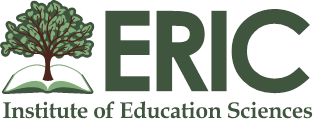Students’ Level of Awareness on the Environmental Implications of Generative AI
DOI:
https://doi.org/10.55549/jeseh.777Keywords:
Students, Generative AI, Artificial intelligence, Environment, AwarenessAbstract
In recent years, the number of studies on artificial intelligence or AI has increased tremendously, and their place in daily life is beginning to be felt more and more each day. Current rise of generative AI tools has brought forth dangers regarding its potential misuse, leading to impacts on the environment. College students were surveyed using an infographic and a 5-point Likert scale to assess their awareness regarding these environmental implications. The students exhibited a lack of awareness on most of the implications, only recognizing generative AI’s impact on the environment to a certain extent. In particular, the awareness of students on the environmental implications of generative AI such as its carbon footprint resulted in an unclear consensus. Additionally, students only showed an understanding of the electricity that generative AI demands and not also the fresh water and rare metals it consumes. The data suggests that this lack of awareness may stem from insufficient knowledge regarding generative AI. To address these concerns, further promotion in raising awareness was recommended, and an infographic was proposed.
References
Dungo, C. A. B., Beltran, Z. L. E., Declaro, B. C., Dela-Cruz, J. J. C., & Viray, R. U. (2025). Students’ level of awareness on the environmental implications of generative AI. Journal of Education in Science, Environment and Health (JESEH), 11(2), 93-107. https://doi.org/ 10.55549/jeseh.777
Downloads
Published
Issue
Section
License
Copyright (c) 2025 Journal of Education in Science, Environment and Health

This work is licensed under a Creative Commons Attribution 4.0 International License.
The articles may be used for research, teaching, and private study purposes. Any substantial or systematic reproduction, redistribution, reselling, loan, sub-licensing, systematic supply, or distribution in any form to anyone is expressly forbidden. Authors alone are responsible for the contents of their articles. The journal owns the copyright of the articles. The publisher shall not be liable for any loss, actions, claims, proceedings, demand, or costs or damages whatsoever or howsoever caused arising directly or indirectly in connection with or arising out of the use of the research material. All authors are requested to disclose any actual or potential conflict of interest including any financial, personal or other relationships with other people or organizations regarding the submitted work.






